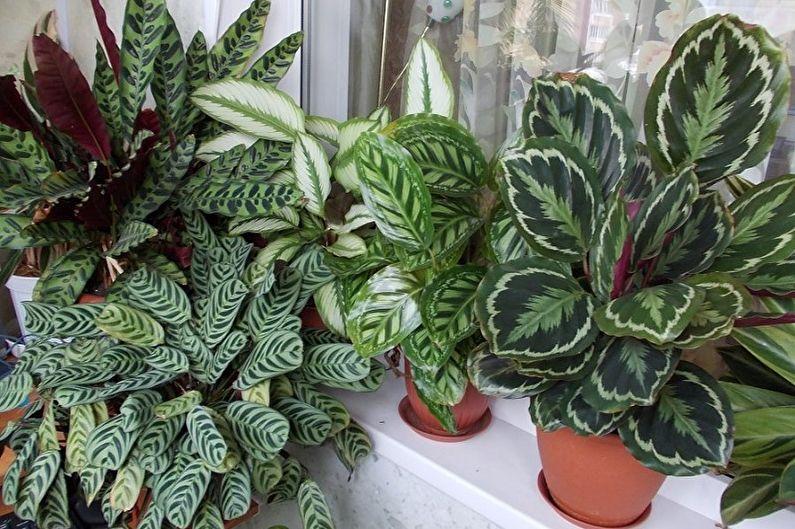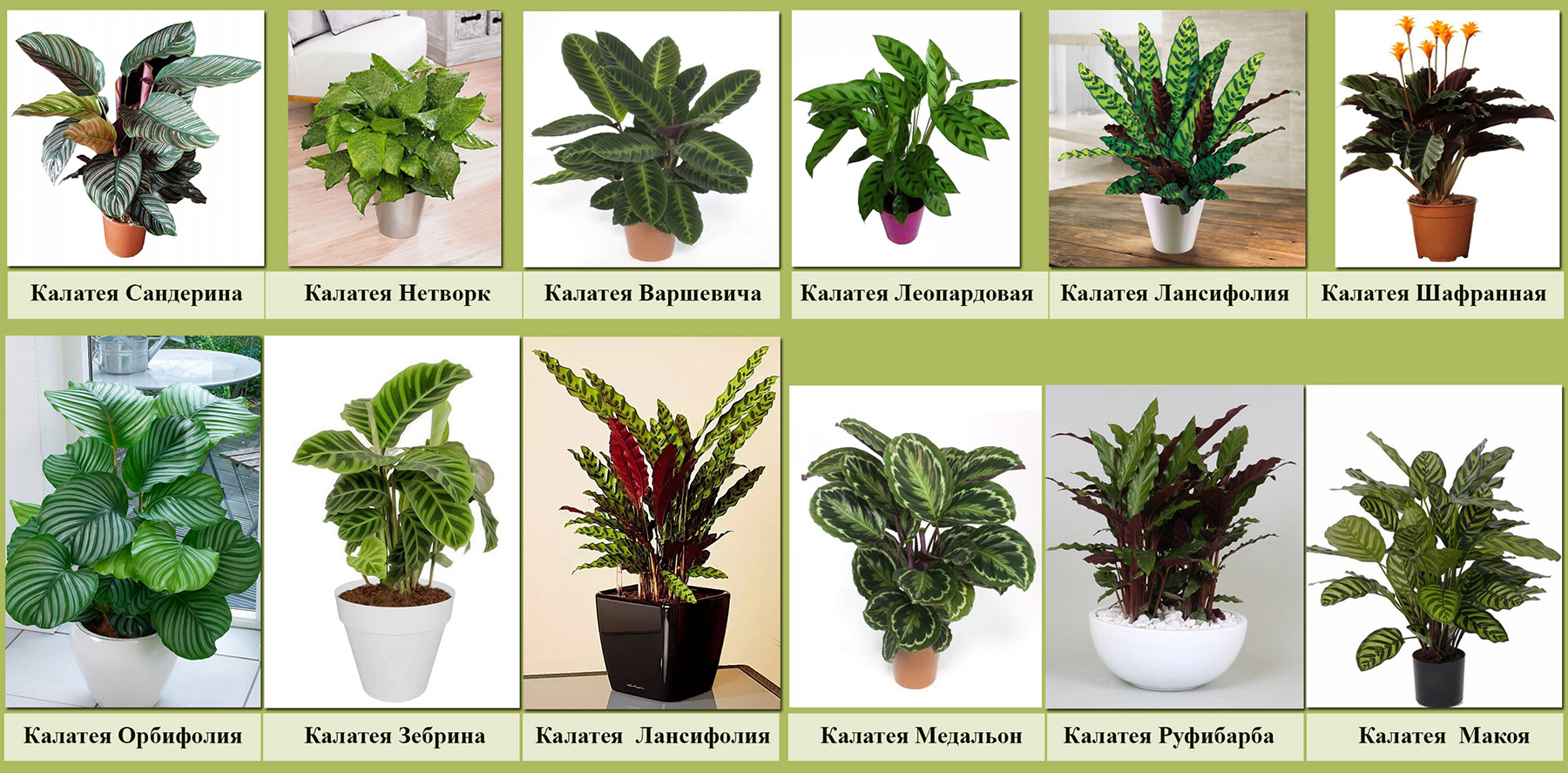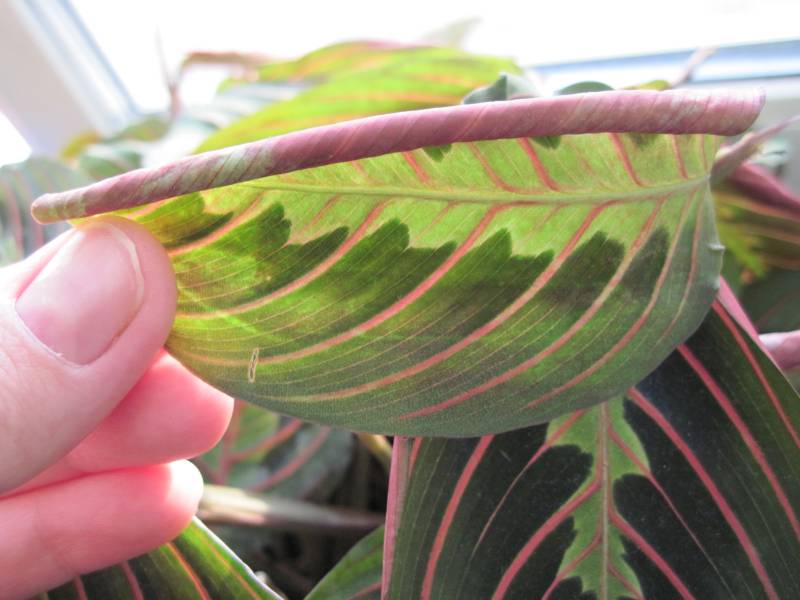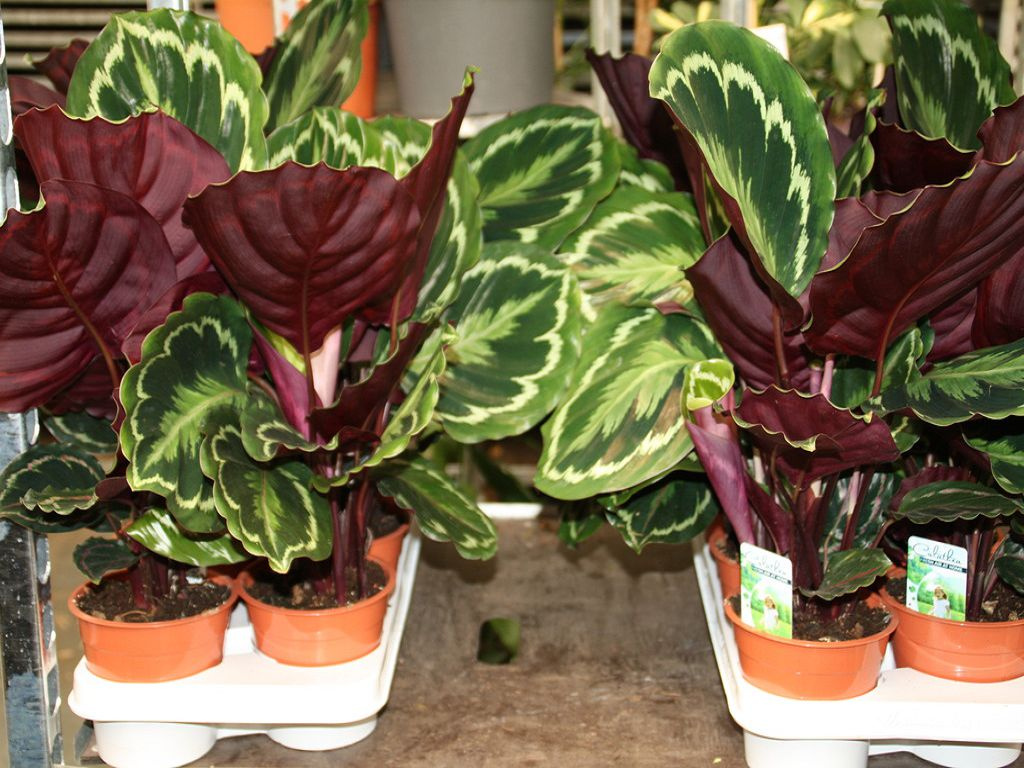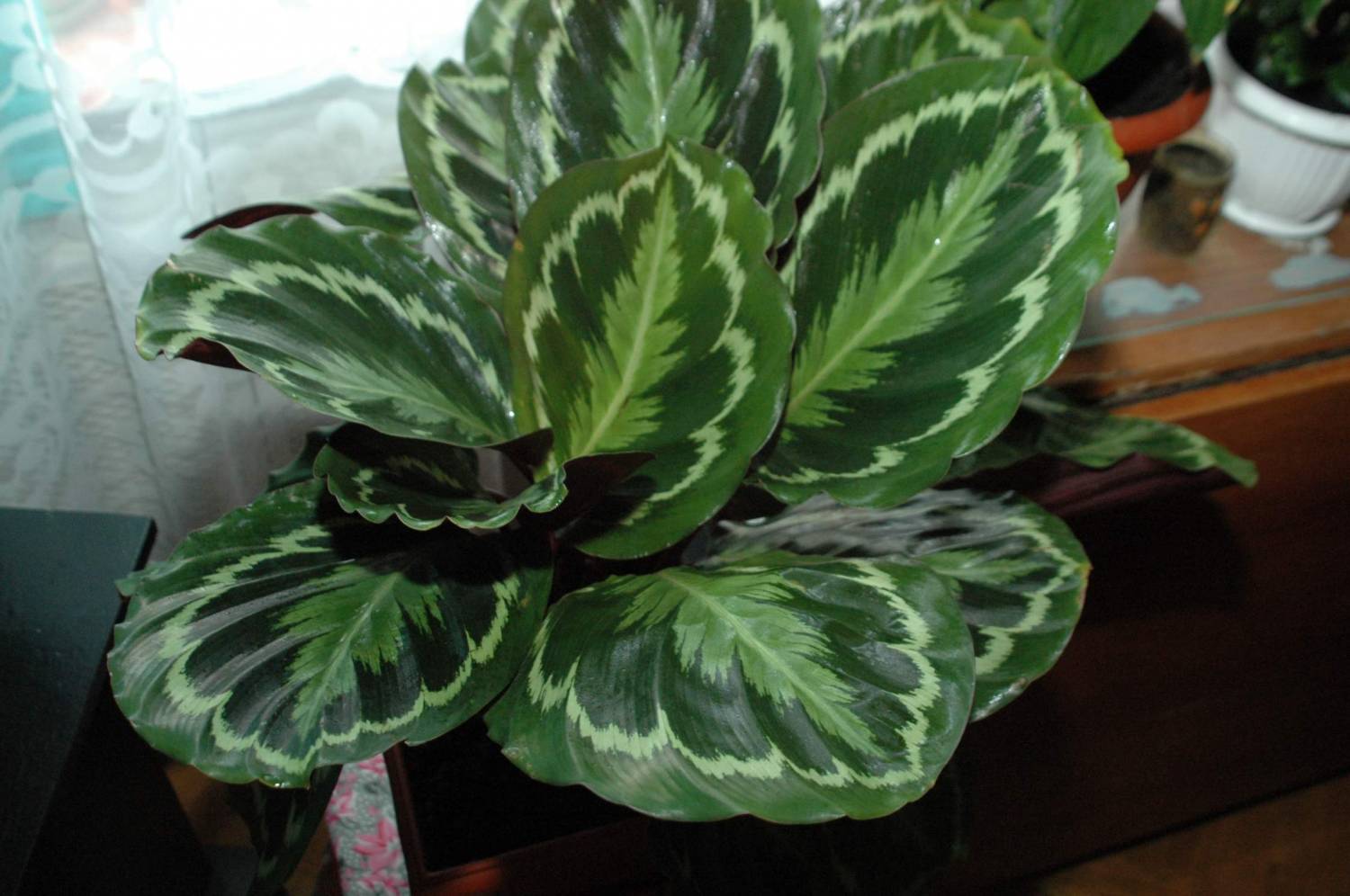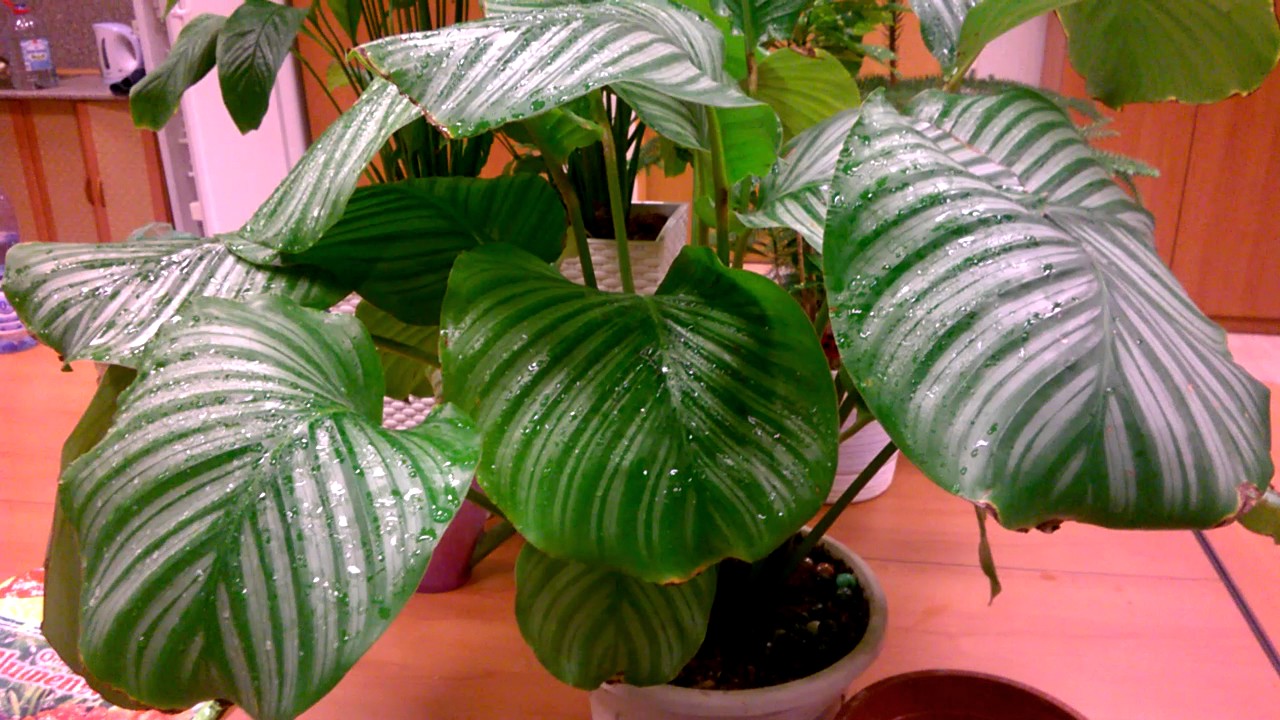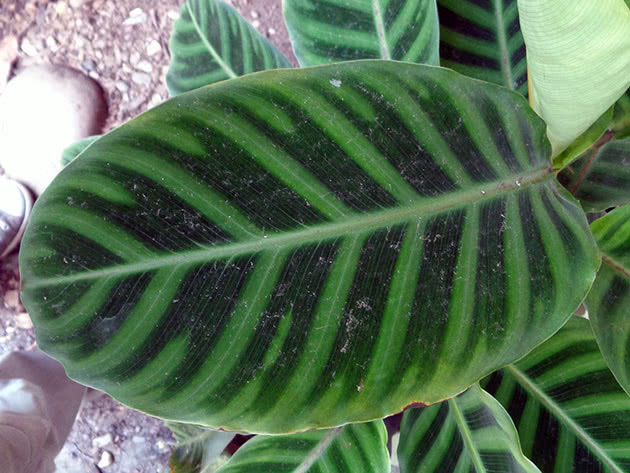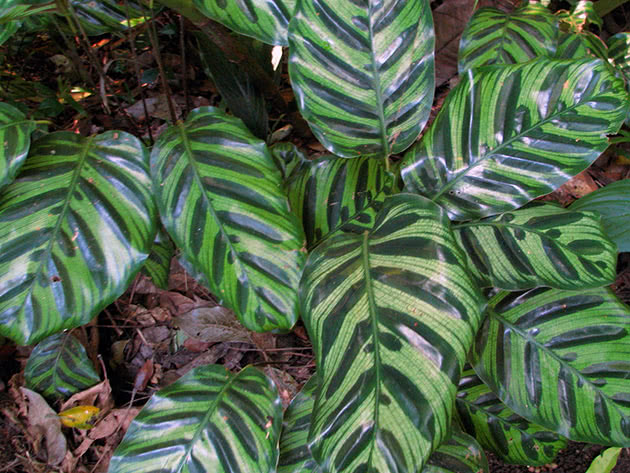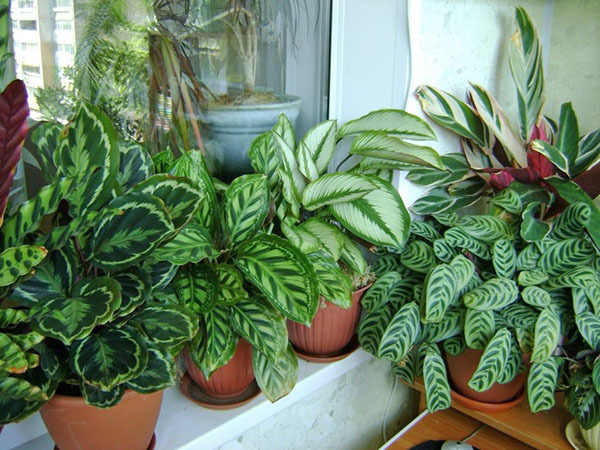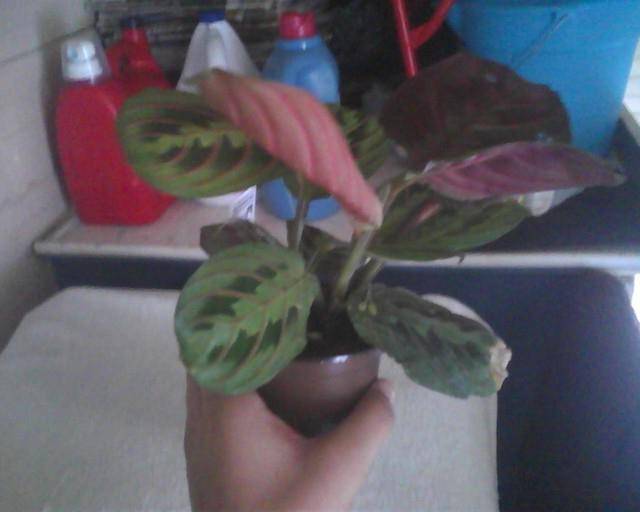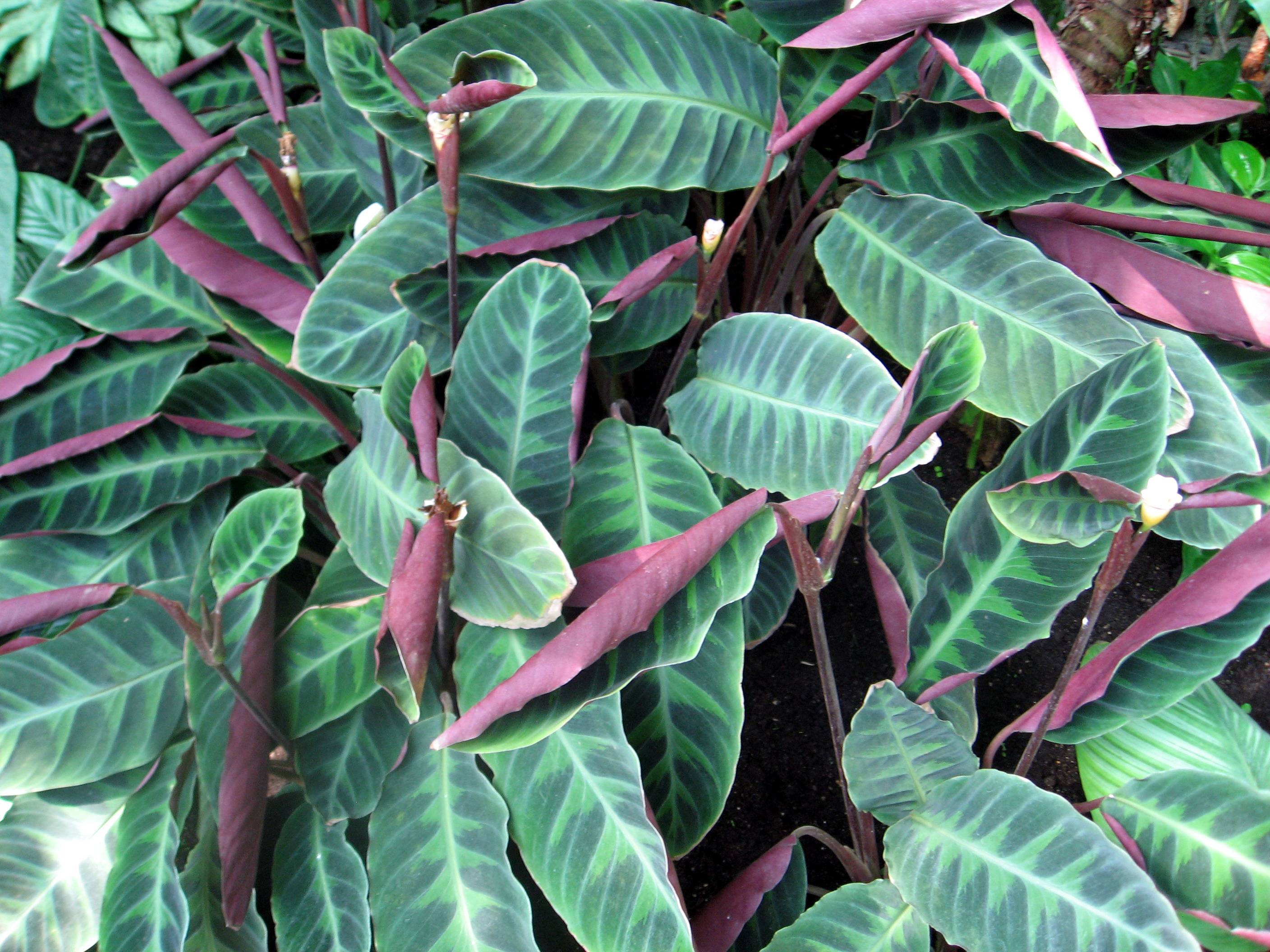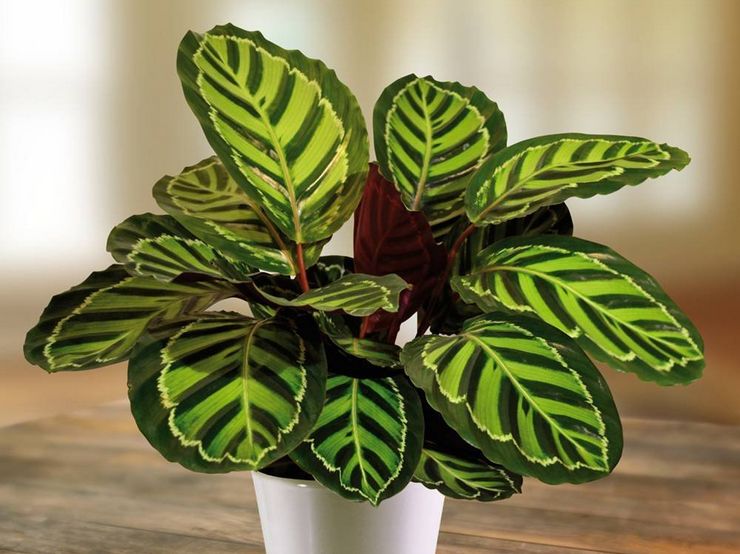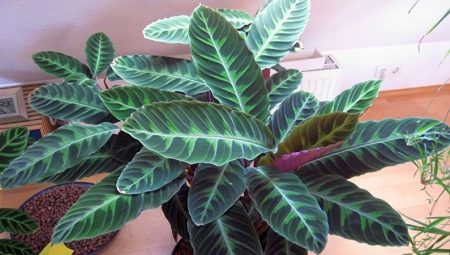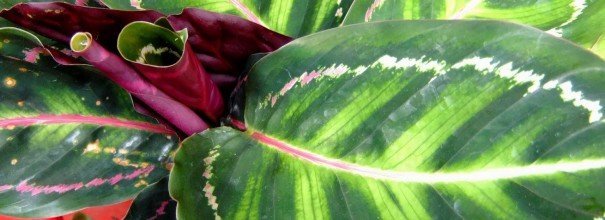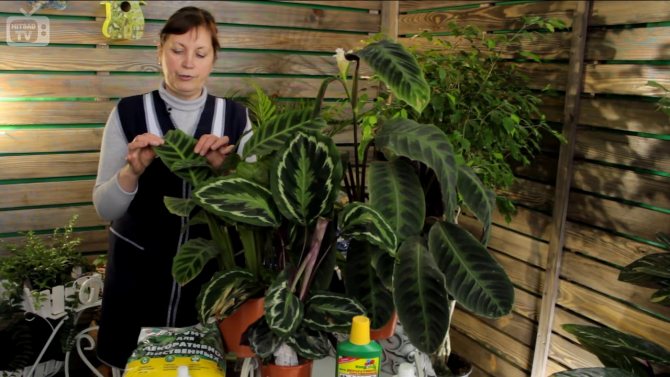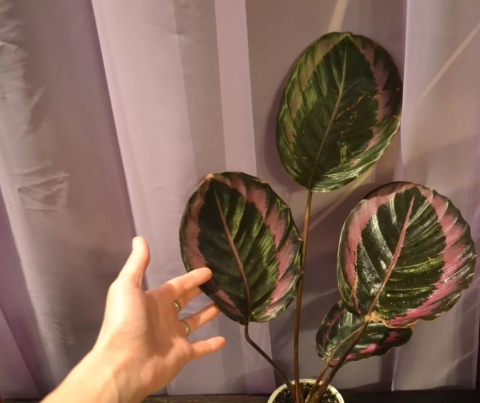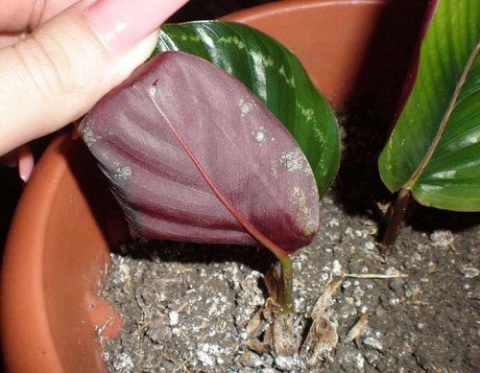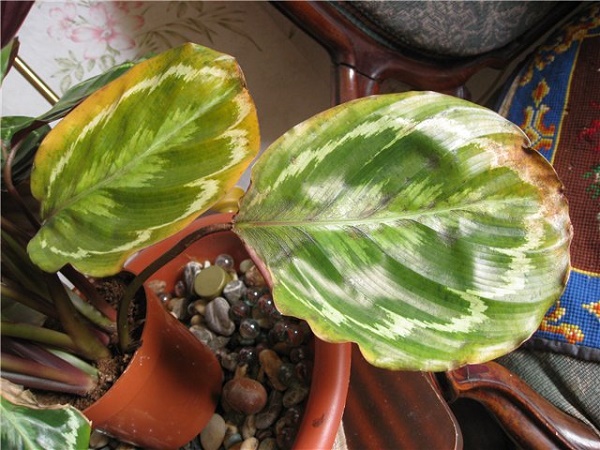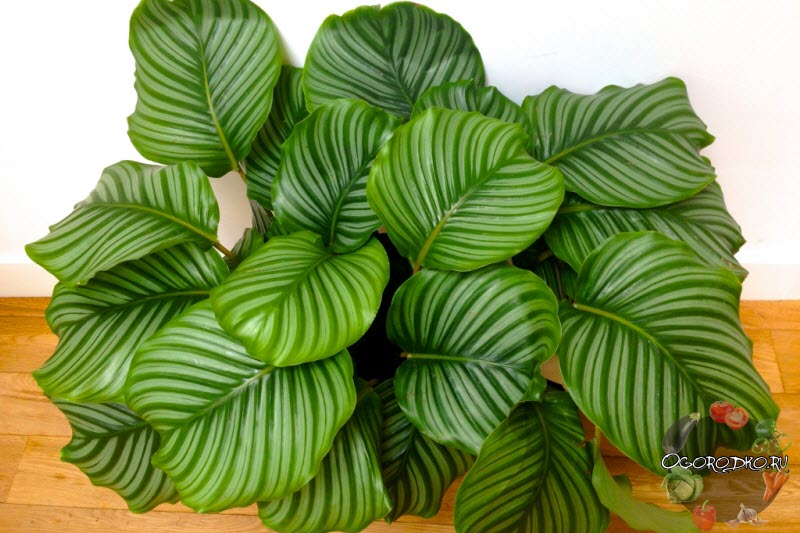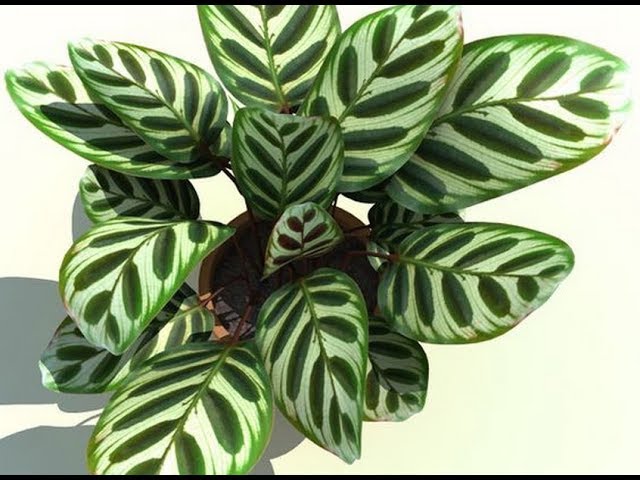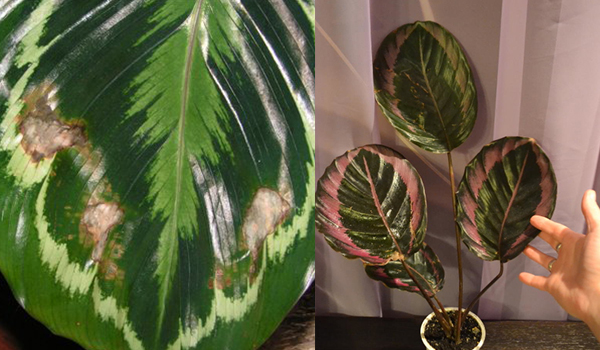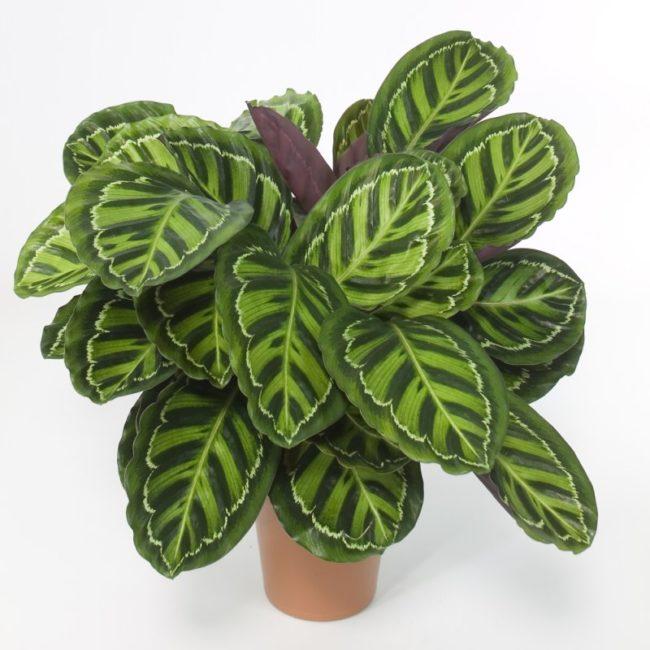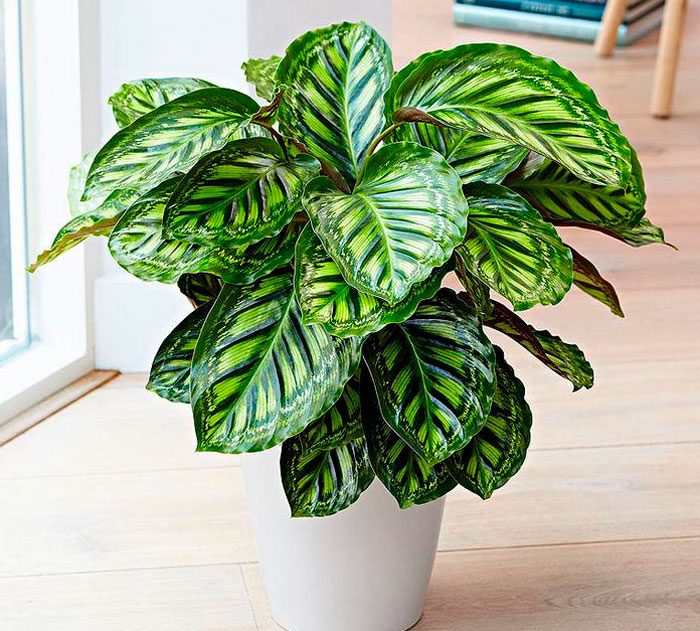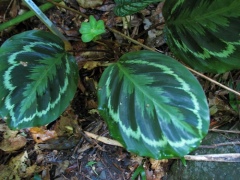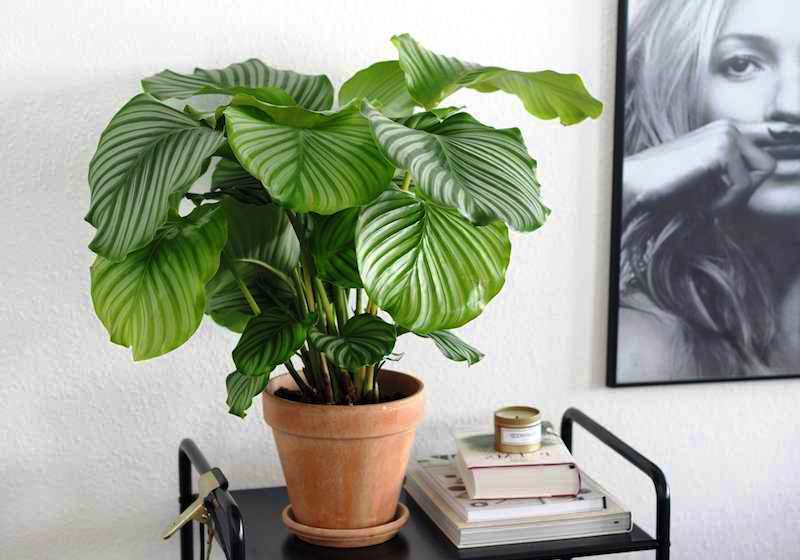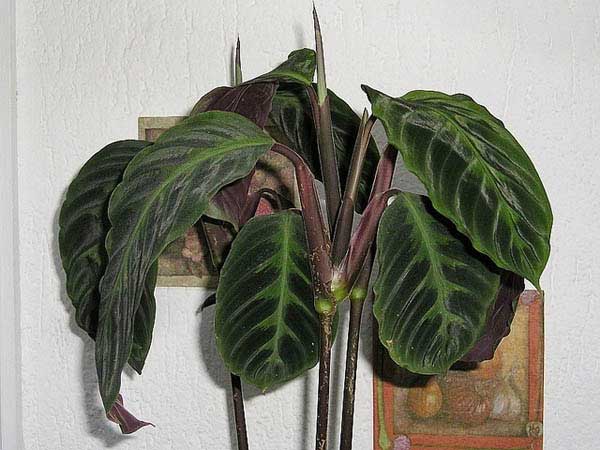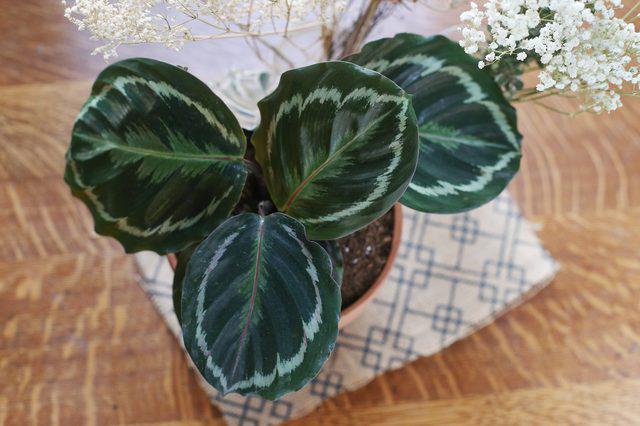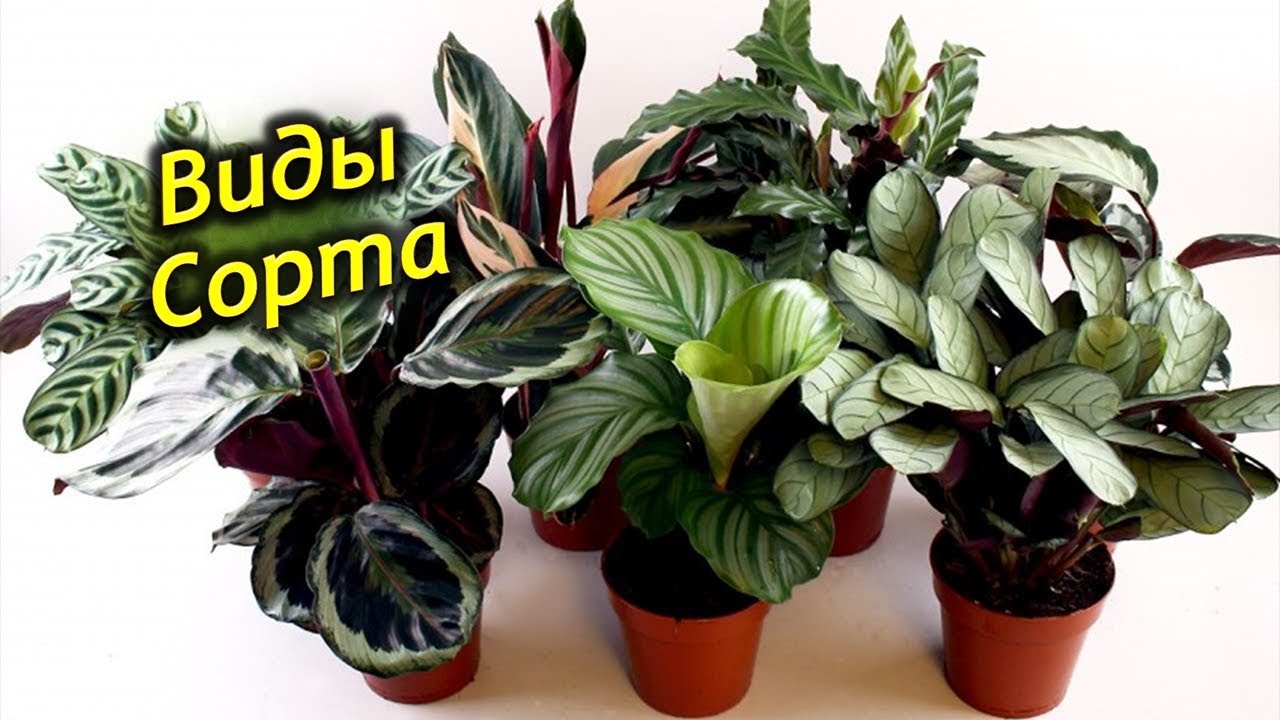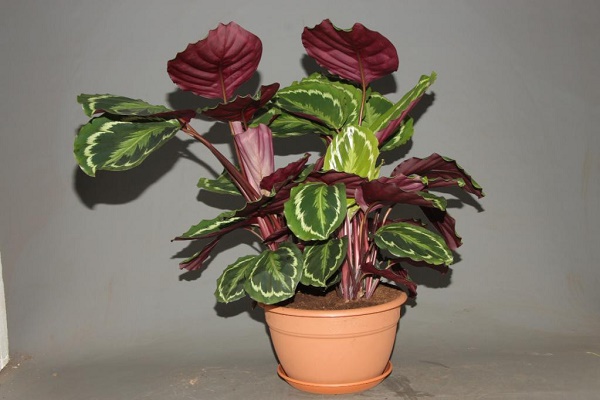Physiological diseases of calathea
Physiological diseases are all injuries or diseases caused by various deviations from normal environmental conditions. This can include excessive or insufficient watering, high air humidity, unsuitable for planting or transplanting calathea into pots, excess or lack of fertilizer in general, or any particular nutrient in particular. Temperatures that are too high or too low can stress the plants, causing irreparable harm.
Lack or overabundance of lighting also affects the development of many species, stopping their growth or abnormally amplifying it. Direct sunlight can cause burns on leaves and stems. In addition, in recent years, it is increasingly necessary to observe pathological changes or plant diseases due to an increased content of harmful substances in the air (for example, tobacco smoke) or in water (excess chlorine, calcium).
The causes of physiological diseases in calathea:
- Heat and cold. The high temperature causes the growth of calathea to stop, necrosis and leaf fall. If the temperature is too low, pathological changes occur - yellowing of leaves, wilting and necrosis of young shoots and buds, which will not be able to bloom. A strong and prolonged cold period has a detrimental effect on all types of calathea.
- Water and humidity. From a lack of water in the soil, the plant withers, its resistance to diseases and pests decreases. If this becomes protracted, zones of necrosis may appear on the leaf blade and tops of the leaves. Reduced air humidity also causes the tops of calathea leaves to dry out. Excess water and moisture contributes to the development of many fungal diseases, decay of the roots and root collar, followed by wilting and discoloration of leaves and shoots.
- Lack or excess of light. Weak illumination of the calathea plant contributes to the excessive, abnormal stretching of the flower, which lets out frail shoots. Excess light is poorly tolerated by almost all types of calathea. Extensive burns begin to appear on the leaves, they discolor, harden, and decrease in size.
- Imbalance in nutrition. Lack or excess of fertilizers in the soil is equally harmful to calathea. The characteristic symptoms of poor plant nutrition are slow growth and discoloration of the leaves. Vague bluish-green spots with a purple tint on the leaves indicate a lack of phosphorus, slow growth, folding of the edges of the leaves, unsaturated color of the plant - about a lack of potassium, discoloration of the leaves, especially between the veins, - about a lack of trace elements, especially magnesium and iron. Excess fertilization leads to the malformed development of the calathea, as well as necrosis of the tops of the leaves.
- Harm from phytopreparations. Herbal medicines, or phytopreparations, are means used to protect cultivated plants from various pests. Improper use can cause leaf discoloration, necrosis and abnormal coloration. It is necessary to carefully read the instructions on the packages and strictly adhere to the indicated dosages, you can consult with experts about their use. It is not recommended to use phytopreparations in the hottest hours, as well as to treat already weakened (usually due to incorrect location) plants with them.
- Chlorinated water. Tap water is too high in chlorine. Try to collect rainwater (if you don't live in an industrial area) and add it to your tap for irrigation.
Purple Calathea Maria.
Calathea leopard.
Calathea Lubbers.
How calathea reproduces
Before propagating calathea at home, you will have to decide which option is best for you out of all possible. Calathea propagates in four ways: by dividing the roots, by leaf, by cuttings, by seeds.
Division of roots
This is the most effective and fastest effective way to plant calathea at home. I use it most often, and practice it together with a transplant. Calathea forms rhizomes and nodules. In adulthood, the rhizome branches out and separates easily.
Procedure:
- The flower is taken out of the pot together with an earthen lump and carefully divided into 2-3 copies, trying to damage the roots as little as possible. For disinfection, the roots of the separated parts are sprinkled with crushed charcoal.
- Delenki are seated in pre-prepared pots filled with peat and coarse river sand in a ratio of 2: 1 and poured abundantly with warm, settled water.
- Each pot is placed in a plastic bag and placed in a warm place. Packages with delenki are tied, but loosely so that air can penetrate inside or holes are made in them.
- When 1-2 new leaves appear on the calatheas, they are transplanted into permanent pots.
Reproduction of calathea leaf
This method is not as popular as division, but it is simpler and also gives good results. For reproduction, you need to choose a healthy young, not too large leaf. Otherwise, the procedure is exactly the same as when dividing roots:
- A suitable leaf is carefully separated from the flower so that the growth points remain on it and on the mother plant.
- They are planted in a pre-prepared pot with wet soil, placed in a plastic bag and placed in a warm place.
- When the seedling takes root, it is transplanted into a permanent container.
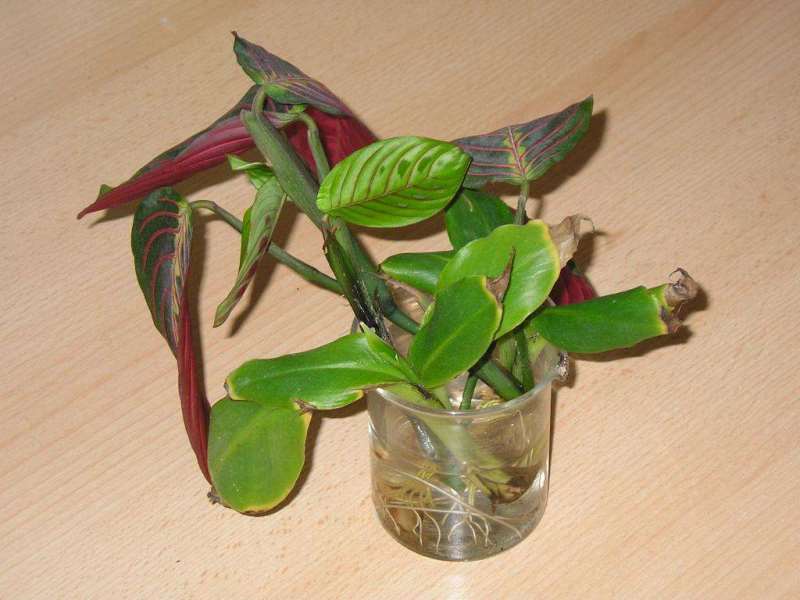
Cuttings
Propagation by cuttings is a method similar to the previous one, but a little more laborious. A stalk with a stem length of at least 15 cm with 3-4 leaves is separated from the mother plant, taking care that there is a growing point on it, and planted in a pot with moist soil. Then the pot with the shank is placed in a plastic bag with air holes and left to root in a warm place. After the appearance of several strong roots, it is planted in permanent soil.
Seed propagation
Growing calathea from seeds is the most unpopular and laborious breeding method. Even under ideal conditions, no more than half of the seeds emerge. In addition, this method is unpredictable, since in 99% of cases the specific features of the calathea are lost, its color may be the most unexpected. Usually it is used by flower growers who like to experiment.
Seeds are harvested from an adult flower in the fall, when the stalks are completely dry. Considering that calathea blooms very reluctantly at home, a more reliable option is to purchase ready-made seeds in the store. During the day, for greater germination, they are soaked in warm, settled water, and then sown, without deepening, in a shallow container filled with moist zeolite or a mixture of turf soil with river sand in a ratio of 2: 1. To create greenhouse conditions, the container is covered with plastic wrap, which is removed every day for 2-3 hours for airing. The optimum air temperature for germination is + 22–25 ºС. After the sprouts give the first pair of true leaves, they dive into small pots (6-8 cm in diameter).
Location
A cold or, on the contrary, sunny windowsill, TV or shelf, computer and other equipment are not the best places for calathea. It does not tolerate bright sunlight, cold, or dry warm air that rises in a stream from switched on household appliances. Direct sunlight, draft, temperatures below 16 ° C are detrimental to calathea. In these, the tips of its leaves inevitably begin to dry, and if you do not locate it in a suitable place, it will die.
Take care of the correct location for the calathea. Keep it away from the window, out of direct sunlight. Protect from drafts. The air in the room should be warm and humid enough. In a word, find a middle ground, and calathea will delight you with its healthy appearance and beautiful, as if painted, leaves.
Reproduction
Calathea is a rhizome plant, so the easiest way is to divide the roots. If you wish, you can cut and root cuttings taken from an adult plant. And especially keen growers can try to grow calathea from seeds.
By dividing the roots
- Gently shake the plant out of the pot, free the roots from the ground, rinse.
- Cut the rhizome with a sharp knife, disinfected in potassium permanganate, into several parts. Sprinkle the slices with charcoal.
- Plant young plants in separate pots with soil consisting of peat and sand in a 1: 1 ratio. Water abundantly.
- Arrange the pots in plastic bags, tie them so that air can enter, or make several holes. Put in a warm place.
- Wait for the plant to produce 1-2 new leaves. Transplant into a pot that is 2–3 centimeters larger, adding the same amount of humus to the peat and sand.

The most popular way to reproduce calathea is by dividing the rhizome
Cuttings
- Separate a large stalk with several leaves more than 15 centimeters long from an adult plant.
- Place the cutting in moist soil of 1: 1 peat and sand.
- Then proceed as when dividing the rhizome.

The stalk is separated along with the growth point, otherwise it will not take root
Seeds
-
Buy calathea seeds or harvest yourself. Soak for better germination for a day.
- Sow onto the surface of a soil consisting of two parts of leafy soil and one part of sand.
- Cover the seed containers with foil or glass.
- Maintain a temperature of 21-25 degrees. Air the seedlings 2-3 hours a day.
- When the seeds sprout and the first two leaves appear, dive the seedlings.
- When the seedlings get stronger, plant the young calatheas in small pots.
Diseases and pests
Diseases of Calathea are quite rare, they most often occur due to improper care: drafts, sudden temperature jumps, dry air. The most common problem with a flower is that its leaves are drying out. There may be several reasons. For example, the air is too dry - if the plant does not have enough moisture, it begins to dry out. The problem is solved with a humidifier or daily spraying. And also poor-quality water, sunburn negatively affects the state of the leaves. Therefore, use only settled water and provide diffused lighting.
Leaves may not only dry, but curl, which is also a common problem. Do not confuse painful curls with natural curls at night. Consider if your plant has encountered the following factors:
- insufficient watering, drought;
- cold or unsteady water for irrigation;
- excess soil moisture and, as a result, root rot;
- cold temperature, draft.
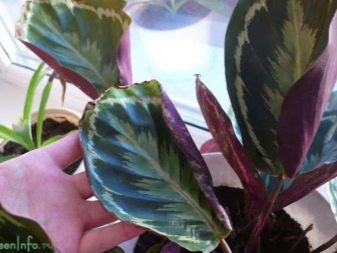
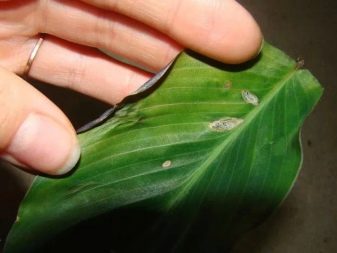
If the leaves not only dry, but also turn yellow, you may have overfed it too much or, on the contrary, forgot about fertilization. Be sure to observe the regularity of feeding, reduce it in winter to once every one and a half months. You may be using too much of a substance.
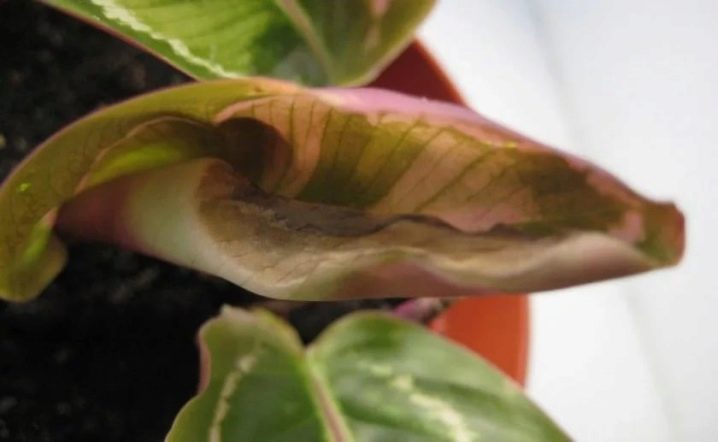
Another problem that may arise for flower growers with calathea is the lack of flowering. It is possible that you have chosen the wrong soil. Calathea feels best in a slightly acidic substrate, so select the appropriate composition. And also the plant does not bloom if the rules of care are violated: not enough moisture, fertilizers, little heat.
The most serious problem when caring for calathea is insect attacks. Most often, this plant is populated by:
- scabbards;
- thrips;
- spider mites.
If the flower is sick, it is necessary to find out if it has been attacked by pests, so carefully look at the foliage, it may be: cobweb, plaque, sticky to the touch, light-colored dots, brown bubbles. Searching for the parasites themselves is useless - they are very small. Whatever pest attacks the plant, it must be placed separately from others, otherwise the parasites will damage those nearby. Be sure to process the place where the flower was, then start treatment.
Insects love dry air and do not tolerate moisture, this must be remembered both in terms of prevention and getting rid of pests. It is necessary to maximize the level of air humidity, rinse the plant with warm water and soapy water. After these procedures, it is necessary to treat the calathea with insecticides.
See below for tips on caring for the plant.
Reproduction
There are 3 ways to breed calathea:
- dividing the bush;
- cuttings;
- seeds.
Dividing the bush
-
When you transplant calathea in the spring, you can divide the rhizome into several parts. Each separated part should have a formed root and a rosette of several leaves.
-
For each cut, take a separate pot with a diameter of 7 to 9 cm.Use for planting a special soil for plants of the Marantov family. You can cook it yourself by mixing equal parts peat, sand and leafy soil. Gently sprinkle the roots of the cut with soil, lightly press.
- Now you need to provide seated calatheas with care. Place the pots in partial shade on a pallet, provide a temperature of about + 20… + 24 ° C, fertilize once every 3 weeks. With proper care, calathea will take root well, and after a year you can transplant it into a larger pot.
Cuttings
This method is not as simple as the previous one. Not everyone manages to propagate calathea by cuttings, but you can try.
-
Carefully separate the ground cutting from the mother plant so as not to damage the leaf stem or root. Its length must be at least 15 cm, it must have a growth point and at least 3-4 leaves.
- Plant the cutting in a pot with well-moistened soil (a mixture of peat and sand in a 1: 1 ratio). Cover with plastic, can or bottle to create a greenhouse effect. This cover should not be removed from the pot until the stalk is fully rooted.
Seeds
The most difficult, time consuming and even unreliable way. Not all calathea seeds, even high-quality ones, can germinate.

Calathea seeds rarely sprout at home.
- When the calathea has faded, collect all the seeds from it. Sow them in bowls with soil, consisting of 1 part of sand and 2 parts of leafy soil, after moistening it, lightly press down.
- Cover the plantings with foil or glass. Germination should take place at a temperature of + 21 ... + 25 ° C. Once the seeds are germinated, cover them with 1 cm of soil.
- When the first two leaves appear, dive the seedlings into boxes or pots with the same soil. A month later, they will get stronger and put out a few more leaves. At this stage, the seedlings can be transplanted into separate pots.
Pests
- Spider mite. One of the most dangerous enemies of indoor plants. It multiplies at lightning speed. The color of the insect usually ranges from milky to dark red.
 The presence of a tick can be detected by a thin web with which it braids a flower and a placer of white specks on the surface of the leaf plates.
The presence of a tick can be detected by a thin web with which it braids a flower and a placer of white specks on the surface of the leaf plates.
The spider mite feeds on the cell sap of stems and leaves.
It is able to completely destroy the plant in a short time.
Fighting this pest is not easy, as the mite quickly adapts to various types of chemicals.
Dry air is one of the reasons for the appearance of this parasite, it is necessary to know this and maintain the required level of humidity in the room.
It is advisable to inspect the plant more often and, at the first signs of damage, remove the leaf where the insect has settled.With a massive mite raid, the flower is treated with any insecticidal solution (actellik, fitoverm).
Watch a helpful video on spider mite control below:
Shield. The wax plaques of this parasite are easy to see on the surface of the leaves with the naked eye. The pest feeds on the cell sap of the flower, as a result of which it withers, dries, the leaf plates are covered with brown spots.
You can destroy a harmful insect with the help of any insecticidal preparation, after pretreating the affected parts of the plant with a concentrated solution of laundry soap. Excessive watering of calathea can lead not only to decay of the roots, but also to the appearance of this pest.
The presence of thrips can be detected by white spots on the surface of the leaves (the insect is on the back of the leaf and eats it from the inside).
White spots subsequently dry out, crumble, holes form in their place. The plant loses its attractive appearance. They fight against harmful insects using any insecticidal preparation, treating the entire plant.
Rhizoctonia. The defeat of this fungus can destroy the calathea. It arises due to excessive watering and the appearance of root rot. You can defeat this enemy by treating the plant with fungicides.
You can see that the diseases and pests listed above are not as scary as you might imagine. How to save Calathea? All problems can be dealt with easily, you just need to see and understand the signal for help sent by your green pet in time.
If you find an error, please select a piece of text and press Ctrl + Enter.
Calathea: diseases and pests that cause rot
Rotting areas on the green parts of the calathea appear as a sign of a disease. Like other indoor plants, this flower can suffer from fungal diseases, often actively developing in high humidity conditions.
That is why it is so important for preventive purposes to regularly inspect the crown and carry out preventive treatments with fungicidal preparations. Bona forte, glyokladin, discor, maxim have proven themselves well.
Important! The use of fungicides to combat fungal diseases of indoor plants must be performed strictly according to the manufacturer's instructions, observing respiratory and skin protection measures, and also be sure to ventilate the room after finishing work

